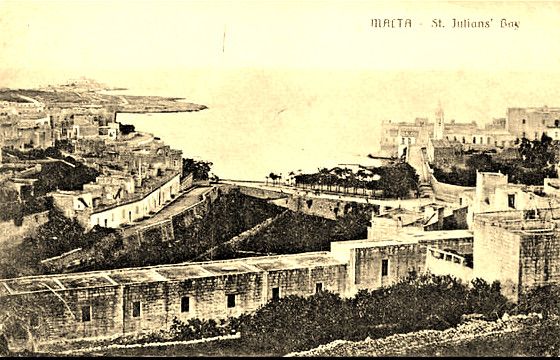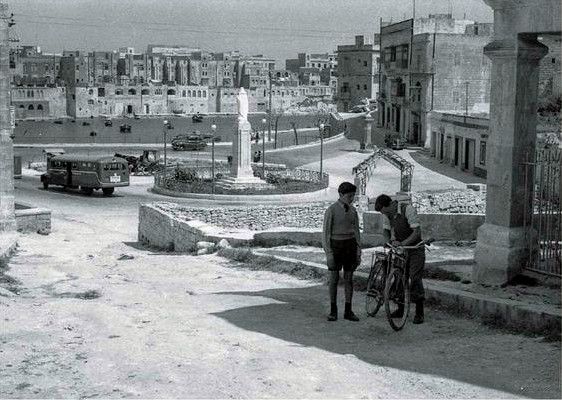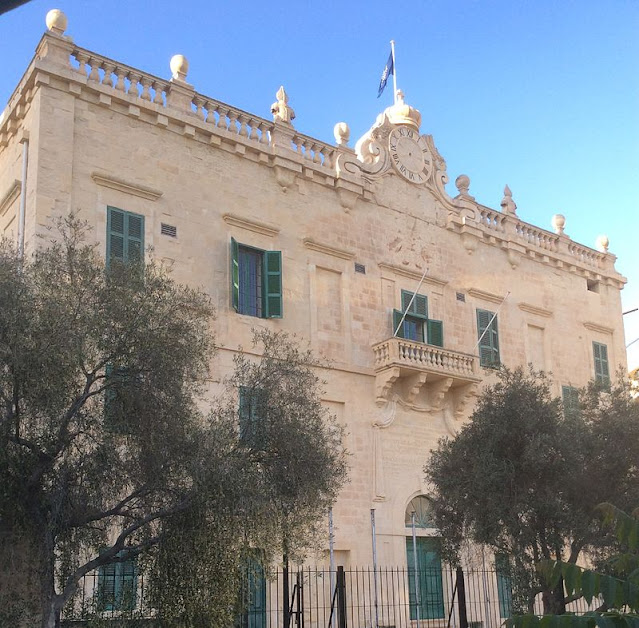St Julian’s in Malta is a picturesque spot. Walking to the love statue along the coast from Sliema is a therapy for mind and body. The scene of the colourful boats lying at anchor add to the colour and drama of the occasion.
But if you could have only seen it a couple of centuries ago perhaps you would have been more impressed still. Before the onslaught of modern hotels, businesses and contemporary apartment blocks there was a beauty that was unique. However, when you think of the hammering Malta received during the war it is amazing how much still remains to be admired. The extent of this bombing is difficult to get your head around but some old photos do speak volumes.
So I suspect we should be grateful for the beauty that remains. But some of the slightly older photos of St Julian's show us another side to this familiar spot that deserves remembering.
In particular, the lovely old buildings on the other side of the bay look stunning and I suddenly see what this area has lost with time. There is a simplicity and loveliness in this shot that surprises and the two boys with their bicycle seem from another more innocent age.
Going back a few more years this close up of Spinola Palace shows that it is missing the crown on its facade that had been removed in 1798 during Napoleon's visit to signify the Knights Hospitaller of St John's expulsion from Malta. The palace itself was originally built in 1688 by a certain Fra Paolo Rafel Spinola, Grand Prior of Lombardy, on a piece of land he obtained from his brother Frangisku Nupuljan Spinola de Roccaforte, Marquise of the Holy Roman Empire.
Fra Paolo Rafel Spinola's nephew was appointed Ambassador of the Order to the Court of King Philip V of Spain, to the King of Sicily and to the Court of Pope Innocent XII. In 1733 the Palace was passed on to him and he enlarged and embellished it. This later construction was designed by Romano Carapecchia, and is considered a masterpiece. We can see his original plans for its construction below.
This building also had at the time of its construction a number of ancillary buildings including two boathouses, a church, a belvedere and a building serving as stables. They still survive today belonging to different private owners, with the palace belonging to the Maltese government. Originally the building had also large extensive gardens, including baroque gardens and vineyards. Over time these were reduced to an enclosed back garden and a small front public garden. Today the palace is barely visible from the bay, being obscured by apartments and other modern buildings. Which is a shame as it is still an impressive building.
The original church, across the road, is also still there but has a new facade.
The stables are now inhabited by Pizza hut and have undergone considerable reconstruction. However, the original belvedere still exists. I had no clue as to what this was, but have since looked up its definition "an architectural structure sited to take advantage of a fine or scenic view". It looks a little neglected but still an impressive building.
Spinola palace's original wine cellar now houses the L-Għonnella Restaurant while the two boathouses, whose structures largely remain, host two other restaurants as well. The original boathouses can be seen more clearly in the photograph below.
The Palace has had a colourful history passing to the church and then in the 1830s, it was used as a residence by the artist Charles Allingham (c.1778-1850). The British military rented it for £20 a year as a hospital and during the 1860's it became known as Forrest Hospital.
It was after named Dr John Forrest who was the Inspector for Hospitals of the period and it served soldiers and was divided into nine wards on different floors. Following the cholera epidemic of 1865, when three patients there died, a sanitary report pointed out that the building was not suitable as a hospital as the building had serious issues related to a bad drainage system and poor ventilation. The following photograph shows the building with its extensive gardens still in existence.
In the 1940s, the Palace was used as a shelter for people whose homes had been destroyed by aerial bombardment in World War II. Following its restoration between 1984 and 1986, it was used to host the Museum of Modern Art rather unsuccessfully and then by the Ministry for Tourism for a period. Spinola Palace was restored once again between 2006 and 2007 and this time the crown on the clock, which had been missing since 1798, and the expulsion of the Order was reconstructed in 2012. The following photograph is not a very old one but shows the Palace still clearly visible in St Julians before it became largely hidden by new buildings. The two boathouses can also be clearly seen here at the waterside along with the traditional buses in the foreground.
I find it a little sad that Spinola Palace is not really visible from this perspective today and it is perhaps reflective of much that has been knocked down, built on and obscured in the rush to commercialise. When Malta's heritage was demolished by bombs during World War 2 there was a need to rebuild and reclaim in a tangible way what had been lost. But in modern Malta, the pace of change seems so very fast that there is almost no time to appreciate what we have before it is cemented over and lost. The beauty and bravery of Malta and the Maltese deserves to be remembered and respected. Sometimes it is by looking back we find the things we value and also the parts of ourselves that need preserving in order to create the future we truly deserve. In these odd, unpredictable days of a pandemic perhaps we all need to dig deep and reflect on the individuals, communities and institutions that Malta needs now.
"Therefore strive that your actions day by day may be beautiful prayers."
Bahá’í Writings













